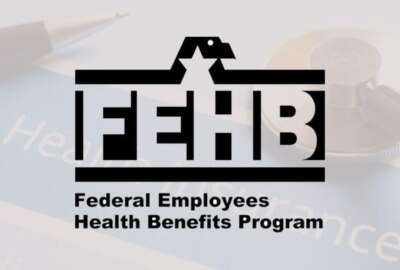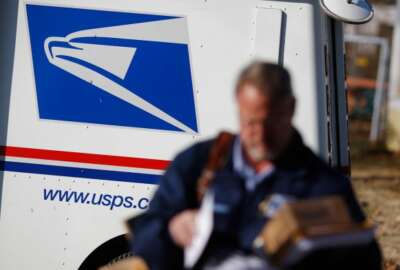
Postal FEHB enrollees feel ‘angst’ as OPM builds USPS-only health insurance marketplace
The Office of Personnel Management is getting plenty of feedback on an upcoming health insurance marketplace for postal employees and retirees.
The Office of Personnel Management is getting plenty of feedback on an upcoming health insurance marketplace for postal employees and retirees.
OPM received more than 70 public comments on its interim final rule to create a new postal-only health insurance marketplace for 1.7 million USPS employees, annuitants and eligible family members. The agency accepted comments through June 5.
The agency is creating the Postal Service Health Benefits (PSHB) Program as a separate entity from the Federal Employee Health Benefits (FEHB) program, as required under the Postal Service Reform Act signed into law last year.
The upcoming change has the support of postal unions, federal employee associations and health care providers in the federal marketplace — but is getting pushback from postal workers and retirees who say they have more questions than answers about enrolling in a new plan under PSHB.
Mark Dimondstein, national president of the American Postal Workers Union, told Federal News Network on April 28 that the union is reaching out to its members about the upcoming changes.
“There’s a lot of time to do the education, make sure people know that they have to make those kinds of choices. But in the vast, vast, vast majority of cases, it’s not going to represent any change at all,” Dimondstein said. “The health plan is going to be just about identical, if not identical. Most of the people will probably remain in the health plans they have, if they’re satisfied with them.”
Dimondstein, however, said there’s been some “angst” among current retirees unaware that they are exempt from a requirement for all future retirees to enroll in Medicare Part B.
“Retirees who are not in Medicare B now are not going to be forced to be in Medicare B once this law matures, but some people don’t know that,” Dimondstein said.
The National Active and Retired Federal Employees Association (NARFE) is asking OPM to prevent as much disruption as possible in moving nearly 2 million FEHB enrollees to new health care plans offered under PSHB.
NARFE National President William Shackelford wrote that further changes to plans, including changes affecting coverage of services and providers, “could cause unnecessary confusion concerning the medical care of postal employees and retirees and create additional challenges for enrollees during PSHB’s initial open season.”
“Understandably, the eventual move to PSHB already has postal workers and retirees concerned that they are losing the health plans and coverage they have worked for and come to expect,” Shackleford wrote. “Limiting changes will ease these concerns and provide PSHB enrollees with greater confidence that they are retaining the health benefits they earned through service to this country.”
NARFE is asking OPM to consider creating a hardship exception that would allow some postal enrollees to continue in their chosen FEHB plans, if that same plan no longer exists in the PSHB.
Shackelford said this exception would mostly serve current enrollees in some small, regional Health Maintenance Organization (HMO) plans.
“If OPM is unable to provide this exception by rule, we ask that OPM ask Congress for this exception,” Shackelford wrote.
NARFE is also looking for further information on the Special Enrollment Period for Medicare Part B, which will allow USPS annuitants and their family members to enroll in Medicare Part B without a late enrollment penalty.
The Special Enrollment Period will begin on April 1, 2024.
Among its questions, NARFE is asking how and when eligible individuals will be notified that they qualify for the Special Enrollment Period.
The BlueCross BlueShield Association, which currently covers more than half of federal workers, retirees, and their families enrolled in FEHB plans, said it supports OPM automatically enrolling FEHB-enrolled Postal Service employees and annuitants who do not make an election to enroll in a PSHB plan during the 2024 Open Season period.
David Yoder, senior vice president of the association’s federal employee program, said the association agreed with OPM that enrollees in those circumstances should be automatically enrolled in a PSHB plan offered by their current FEHB carrier, in a plan “with equivalent or most similar benefits and cost-sharing as their current FEHB plan.”
“In cases where a carrier is not offering PSHB plans, we support OPM automatically enrolling them in the lowest-cost nationwide PSHB plan that is not a high deductible health plan and that does not charge an association or membership fee,” Yoder wrote.
The Association of Federal Health Organizations said that OPM confirmed, earlier this year at its carrier conference, that carriers participating in PSHB are not required to carry over all of their current FEHB plan options.
Rocky Midgett, the association’s chairman, said many FEHB nationwide carriers offer multiple options, and regional carriers offer coverage in various regions, which are treated as separate plans.
“As we understand this rule, if a carrier offers two or three options in the FEHBP and only one of those options in the PSHBP, all of the automatic enrollees from the FEHBP only option(s) would be moved over to the carrier’s PSHBP plan regardless of equivalence of benefits and cost-sharing,” Midgett wrote.
“However, suppose a carrier offers three options in the FEHBP and two in the PSHBP. In that case, OPM must determine whether automatic enrollment will be made to one of those options based on equivalence of benefits and cost-sharing,” he added.
The Congressional Budget Office estimates postal enrollees in PSHB could also see slightly lower premiums, since postal retirees will primarily be covered under Medicare Parts A and B. However, some USPS employees and retirees remain wary about their premiums under a new plan.
“One thing I do know is separating postal employees from other federal employees creates a smaller pool of people. From an insurance point of view, that means higher risk. Higher risk means higher prices. Not to mention postal workers tend to be older, which will also add to the cost,” a USPS employee wrote to OPM.
OPM states in its interim final rule that the actual total costs and benefits associated with the Postal Service Reform Act — as well as the creation of the PSHB — are “highly uncertain.”
Several postal retirees wrote to OPM, complaining about their inability to stay “grandfathered” into their current FEHB plans, and having to enroll in a new during the Open Enrollment period in 2024.
A USPS retiree told OPM that, “When I made my decision to retire, I was never told that someday I’d be forced into a different insurance plan that might cover less and cost me more.”
“We base our decision to retire on what’s available to us at the time and should never be forced to accept anything less,” the retiree wrote.
Another commenter warned USPS retirees may not be aware of the need to enroll in a PSHB plan or the upcoming Special Enrollment Period to sign up for Medicare Part B without any penalty.
“In light of this, OPM should automatically enroll all qualified annuitants, qualified family members, and survivors into Medicare Part B, unless they actively opt out in writing, having been informed of the consequences of this action,” the commenter wrote. “Losing health insurance will be catastrophic, and there is an obligation to ensure this does not happen.”
Copyright © 2025 Federal News Network. All rights reserved. This website is not intended for users located within the European Economic Area.
Jory Heckman is a reporter at Federal News Network covering U.S. Postal Service, IRS, big data and technology issues.
Follow @jheckmanWFED





